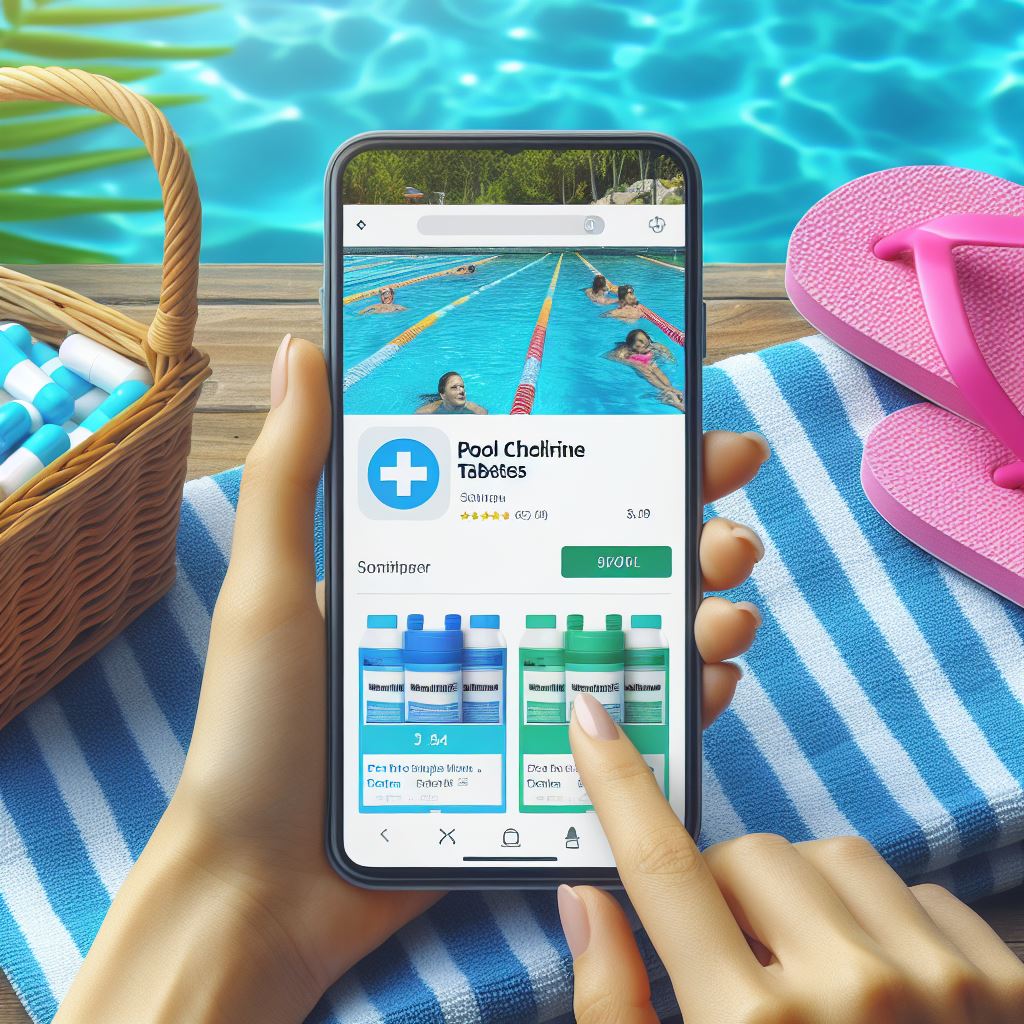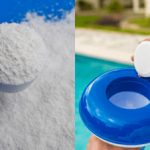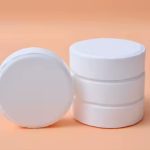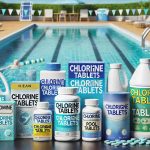In the realm of pool maintenance, chlorine tablets stand as a cornerstone of ensuring clean, safe, and hygienic water conditions. Their role is pivotal across various geographies, adapting to the diverse demands imposed by different water quality standards, climatic conditions, and cultural practices. This article embarks on a comprehensive exploration of how pool chlorine tablets are tailored to meet the unique needs of users worldwide, reflecting our extensive experience and capabilities in navigating the global market.
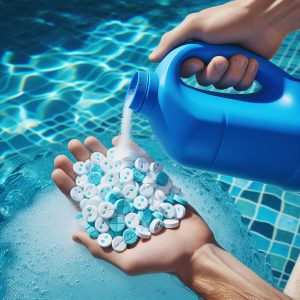
Section 1: Understanding Pool Chlorine Tablets
Pool chlorine tablets are a fundamental component in maintaining the safety and clarity of swimming pool water. Composed primarily of trichloroisocyanuric acid (Trichlor) or dichloroisocyanuric acid (Dichlor), these tablets serve a pivotal role in the controlled release of chlorine into pool water. This slow-release mechanism ensures a consistent chlorine level, crucial for combating pathogens and maintaining water quality over time.
Chemical Composition and Functionality
Trichlor tablets, known for their high chlorine content (about 90%) and low pH, dissolve slowly, making them ideal for ongoing water treatment in outdoor and indoor pools. Dichlor, on the other hand, contains slightly less chlorine (about 60%) but dissolves more quickly and has a near-neutral pH, which can be advantageous in certain water conditions. Both forms are stabilized, meaning they contain cyanuric acid to protect the chlorine from rapid degradation by UV light, thus extending the effectiveness of the chlorine in outdoor pools.
The effectiveness of pool chlorine tablets extends beyond mere sanitation. These tablets also play a crucial role in algae prevention, with the chlorine working to inhibit algae growth before it becomes visible. Additionally, they help in breaking down organic contaminants, including sweat, oils, and urine, that can introduce harmful bacteria and unpleasant odors into pool water.
Benefits
Ease of Use: Chlorine tablets are designed for convenience, easily placed in floating dispensers, skimmers, or automatic chlorinators, allowing for a hands-off approach to water treatment.
Efficiency: Their slow-dissolving nature provides a steady supply of chlorine, reducing the need for frequent water testing and adjustments.
Effectiveness: By maintaining an optimal chlorine level, these tablets ensure water is safe for swimming by killing bacteria and other pathogens.
Section 2: Water Quality Standards Around the World
Water quality standards vary significantly from one region to another, influenced by local environmental policies, public health guidelines, and the availability of resources. In Europe, for example, stringent regulations mandate the minimal use of chemicals, pushing manufacturers to develop highly efficient, low-dosage chlorine tablets. Conversely, in parts of Asia, where waterborne diseases are more prevalent, the emphasis is on stronger disinfection properties, necessitating a different formulation approach. These variations not only challenge us to adapt our products but also to innovate continuously, ensuring that our chlorine tablets not only meet but exceed local water quality standards.
Section 3: Adapting to Climate Conditions
Climate conditions play a significant role in pool maintenance, influencing the rate at which chlorine is consumed and the growth rate of algae and bacteria. Manufacturers of pool chlorine tablets must consider these variables to create products that are effective in a variety of climates.
3.1 Tropical Climates
In tropical regions, high temperatures and intense sunlight can degrade free chlorine levels rapidly, necessitating a formulation that can withstand these conditions. The increased rate of bacterial growth and the prevalence of algae in warmer waters also require higher chlorine concentrations to maintain sanitary conditions. Manufacturers may offer high-stabilized chlorine tablets suited for these environments, providing longer-lasting disinfection despite the challenging conditions.
3.2 Temperate Climates
Pools in temperate climates face different challenges, including seasonal usage patterns. During the warmer months, pools may require more frequent chlorination due to increased use and environmental factors similar to tropical regions, albeit to a lesser extent. In cooler months, the demand for chlorine decreases, but maintaining water balance and preventing algae growth remains important. For these regions, manufacturers might produce chlorine tablets with a balanced release rate, ensuring pools remain clean and safe throughout the swimming season and beyond.
3.3 Adjustments in Tablet Usage
To address the varying demands imposed by climate conditions, pool owners and maintenance professionals may need to adjust the quantity and frequency of chlorine tablet usage. In tropical climates, this might mean using more tablets or opting for tablets with higher chlorine content. In temperate climates, adjusting the number of tablets based on seasonal changes ensures that pools are not over or under-chlorinated.
Section 4: Cultural and User Habit Differences
The global application of pool chlorine tablets is not solely a technical challenge; it’s deeply influenced by cultural attitudes and user habits surrounding pool maintenance and swimming as a leisure or sporting activity. These cultural nuances significantly affect the demand, usage patterns, and even the marketing of chlorine tablets in different regions.
4.1 Cultural Attitudes Towards Pool Maintenance
In many Western countries, such as the United States and Australia, private pool ownership is a common feature of suburban homes. Here, the culture around pool maintenance is well-established, with a strong emphasis on regular cleaning and disinfection to ensure a safe swimming environment. Pool owners are generally well-informed about the necessary chemicals and equipment for pool upkeep, including the use of chlorine tablets for maintaining water hygiene.
Contrastingly, in some Asian and Middle Eastern countries, public or community pools are more prevalent than private ones due to space constraints and cultural preferences. In these regions, the responsibility for pool maintenance falls on professional pool service companies rather than individual owners. This difference in pool management leads to variations in chlorine tablet formulations, with a preference for slower-dissolving tablets that provide prolonged disinfection, suited for high-usage public pools.
4.2 User Habits and Preferences
User habits also play a crucial role in shaping the market for pool chlorine tablets. For instance, in Europe, there’s a growing preference for eco-friendly and skin-sensitive products, reflecting broader societal trends towards environmental sustainability and health consciousness. This preference has prompted manufacturers to innovate in the development of chlorine tablets that are not only effective in pool disinfection but also minimize environmental impact and are gentle on swimmers’ skin.
In contrast, in regions with warmer climates and year-round swimming seasons, such as Latin America and parts of Africa, the focus is on the efficacy and cost-effectiveness of pool maintenance products. Pools are used more frequently, increasing the demand for chlorine tablets that offer robust disinfection capabilities at a lower cost. This necessitates a balance between product quality and affordability, challenging manufacturers to optimize their production processes and supply chains.
4.3 Adapting to Local Needs
Understanding and adapting to these cultural and user habit differences is crucial for manufacturers aiming to serve the global market effectively. It involves not only tailoring product formulations to meet specific regional needs but also adopting diverse marketing and educational strategies to engage with different audiences. For example, in markets with a high emphasis on sustainability, manufacturers might highlight the eco-friendly aspects of their chlorine tablets, whereas in cost-sensitive markets, the focus might be on the product’s value proposition and efficacy.
Moreover, providing educational resources and support to pool owners and maintenance professionals worldwide can help demystify pool care, promoting the proper use of chlorine tablets across different cultural contexts. This not only enhances the safety and enjoyment of swimming pools but also reinforces the global brand presence of manufacturers as trusted experts in pool care.
Section 5: Regulatory Compliance and Safety
The global chemical industry, particularly the segment dealing with pool maintenance products like chlorine tablets, operates under a complex web of regulations that vary significantly from one country to another. In the United States, the Environmental Protection Agency (EPA) oversees pool chemicals, mandating rigorous testing to ensure they are safe for human health and do not harm the environment. European Union regulations, under the Biocidal Products Regulation (BPR), impose similar stringent requirements, with an added emphasis on minimizing the environmental footprint.
Manufacturers must navigate these diverse regulatory landscapes by ensuring their products meet specific criteria for safety, efficacy, and environmental impact in each market. For instance, in regions with stringent environmental laws, chlorine tablets must not only disinfect pool water effectively but also degrade into harmless substances within a reasonable timeframe.
To comply with these varying regulations, manufacturers often develop multiple formulations of their products, tailoring them to meet the local standards of the markets they serve. This approach necessitates a significant investment in research and development (R&D) to innovate formulations that can satisfy the regulatory requirements of multiple jurisdictions without compromising on performance.
Furthermore, safety protocols during the manufacturing process are paramount. Proper handling, storage, and disposal methods are implemented to protect workers and the environment from potential harm. Training programs and safety measures are regularly updated to reflect the best practices in chemical handling and manufacturing.
Section 6: Technological Innovations and Sustainability
The drive towards sustainability has significantly influenced the development of pool chlorine tablets. Manufacturers are increasingly leveraging technological innovations to create products that are not only effective but also environmentally friendly. For example, recent advancements have led to the creation of chlorine tablets that dissolve more slowly, reducing the frequency of application and, consequently, the amount of chemical used over time.
Another innovation in this space is the development of multifunctional tablets that combine chlorination with other pool maintenance functions, such as algae prevention and water softening. This multifaceted approach reduces the need for multiple products, thereby minimizing the environmental impact associated with producing, packaging, and transporting these chemicals.
Sustainability efforts extend beyond the products themselves to encompass the entire manufacturing process. Energy-efficient production methods, such as solar-powered facilities, are becoming more common. Additionally, the use of recycled materials in packaging and the implementation of take-back programs for used containers help reduce waste and promote recycling.
Section 7: Case Studies of Global Application
Case Study 1: Adapting to Regulatory Standards in Europe
TSChlorine, a leading manufacturer of pool chemicals, faced challenges entering the European market due to strict environmental and safety regulations. By investing in R&D, the company developed a new line of chlorine tablets that not only met the EU’s Biocidal Products Regulation but also offered enhanced performance characteristics, such as increased stability and reduced residue. This innovation allowed the company to gain a significant market share in Europe, demonstrating the importance of adaptability and compliance in global business operations.
Case Study 2: Meeting the Demands of Tropical Climates
In tropical regions, where high temperatures and humidity accelerate the growth of algae and bacteria in pools, a different approach was required. TSChlorine customized their chlorine tablets to have a higher active ingredient concentration and a more robust dissolution rate to combat these challenges effectively. This tailored solution improved pool water quality for users in tropical climates and established the brand as a go-to solution for challenging environmental conditions.
Case Study 3: Sustainability Initiatives in the United States
In response to growing environmental consciousness among consumers in the United States, TSChlorine launched a line of eco-friendly pool chlorine tablets. These tablets were designed to minimize chemical use and were packaged in biodegradable materials. The initiative was a hit, resonating with environmentally aware consumers and setting a new standard for sustainable pool maintenance products in the market.
Conclusion
The varied applications of pool chlorine tablets across different countries and cultures highlight the importance of adaptability and innovation in the global pool maintenance industry. By understanding and responding to the diverse needs of the global market, TSChlorine manufacturer can ensure that pools around the world remain safe, clean, and enjoyable for all users. As the industry continues to evolve, the focus on quality, safety, and sustainability will remain paramount, guiding the development of new products and solutions for pool care in an increasingly interconnected world.
